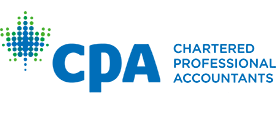Accounting jargon is often thrown around by banks and accountants about your business financial wellbeing. This can cause many business owners to go into a state of panic and confusion.
Here is a 101 on what the jargon truly mean for your business:
Revenue:
How much you sell your products/services for. For example, if you own an online furniture store and sell a dining room set for R20 000, that is the revenue.
The following are key questions that you should ask yourself as a business owner with regards to how much you should sell for:
1. Pricing: Is your selling price enough to make a profit and attract enough clients?
2. Competitors: How much are your competitors selling their product/service for?
How can you gain market share from your competitors ?
Is there a price difference because of the quality of their product/service – is there a competitive advantage?
Cost of Sales:
How much money did you spend to be able to make the product or provide the service you are selling? For example, your furniture store purchased wood for the dining room set for R8 000 and you spent R2 000 on an expert to put it together; therefore, R10 000 is your cost of sale.
Questions to ask yourself:
1. Cost: Are you paying the same amount (industry norm) as your competitors to produce your product/service?
Could you negotiate a better buying price from your suppliers?
2. Salary: Are you paying the right salary/wages for your employees compared to what other employees in that field are earning?
Gross Profit:
If you take the selling price (revenue) of the product/service and remove the cost of producing the product/service (cost of sale), are you making enough money? For example, if you sell the dining room set for R20 000, and you spent R10 000 to produce it, you would make a gross profit of R10 000.
Questions to ask yourself:
1. Are you making enough profit compared to others (industry norm) who also sell this type of product/service?
2. Are you making enough profit to cover your other expenses?

Expenses:
These are the general costs of running a business such as rent, water, electricity and staff salaries. Question if you are paying the industry norm with these expenses, as often these get over-looked and can affect the growth of your business.
Depreciation:
This is the reduction in the value of your assets (equipment/machinery) on a monthly/yearly basis due to wear and tear. For example, if you buy a computer for your business at R6 000, and after 3 years you need to buy a new computer, you will use up R167 worth of the computer each month (R6000 / 3 years/ 12 months = R167). The computer will then be worth R167 less every month that it is used during those 3 years. Questions to ask yourself:
1. When do you replace your equipment and how much will it cost to buy another one?
2. How much can you sell the old equipment for?
Net Profit/Loss:
How much money your business makes or loses per month/year after the cost of sale, expenses and depreciation. For example, your furniture business sells a dining room set for R20 000 which cost R10 000 to make, pays R5000 in general expenses and your assets depreciated by R167, the Net Profit for your business is R4833 (NP % is 4833/ 20000 = 24% ).
Questions to ask yourself:
1. Profit: Is the amount of money made worth the investment (money & time) you have put into the business? What is the net profit percentage industry norm?
2. Loss: If I did not make money from the business, is it possible to make money next month/year?

Source: StatsSA Quarterly Financial Statistics Survey – December 20181 (QFS) estimates, NP% norm for SMME industry for December 2018
Balance Sheet:
This records the assets (resources you own), liabilities (the amount you owe to other people) and equity (investment you have put into the company).
Questions to ask yourself:
1. Liquidity: how quickly can you turn your resources into cash in the bank? How quickly can you sell your inventory or get your debtors (people who owe you money) to pay?
2. Solvency: When do you need to pay the people you owe, and do you have enough money to pay them?
3. Return on investment: after all you have invested into the business, how much are you making?
Cashflow Statement:
This is a list of all the money that entered or left your bank account. You can be profitable but not have money in the bank. The primary cause of this is because you have sold the product, but the customer has not paid you. Alternatively, it could be because you loaned money from the bank or investors and you had to take the profit from your business to pay the loan. Cashflow is one of the main reasons small businesses fail. Keep a close eye on this information, ask yourself the following questions:
1. Is the cash in your bank enough to cover your costs?
2. How can you save enough money to cover your costs for 3 months, even if my customers do not pay?
3. How much of your money is going to be used to pay off loans?
Do not let the accounting jargons get you down; no one knows your business better than you. It is vital that you can translate your understanding into the global language for business (accounting) so that others are able to aid your journey of growth.



